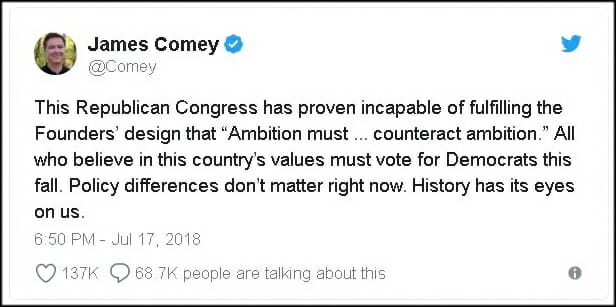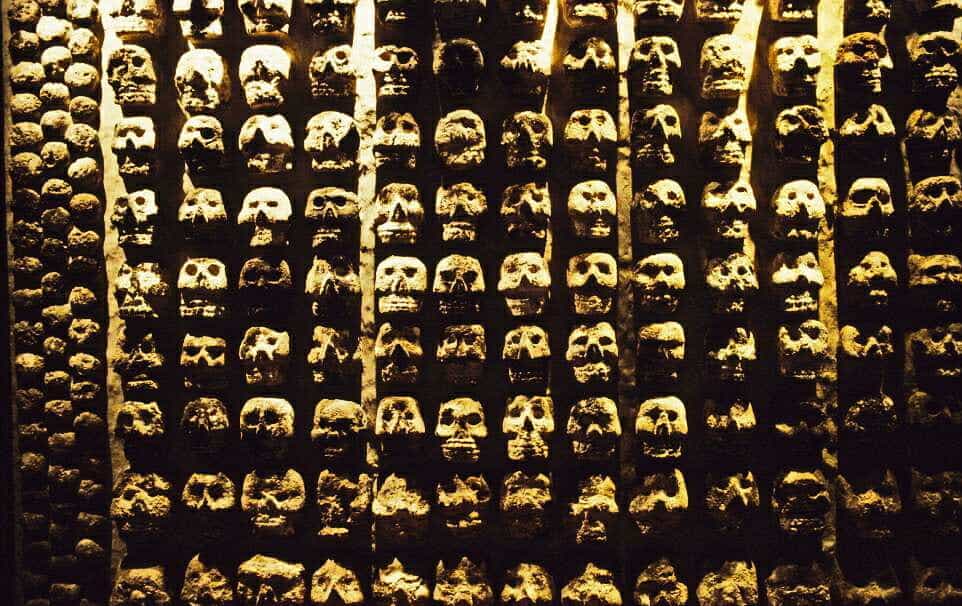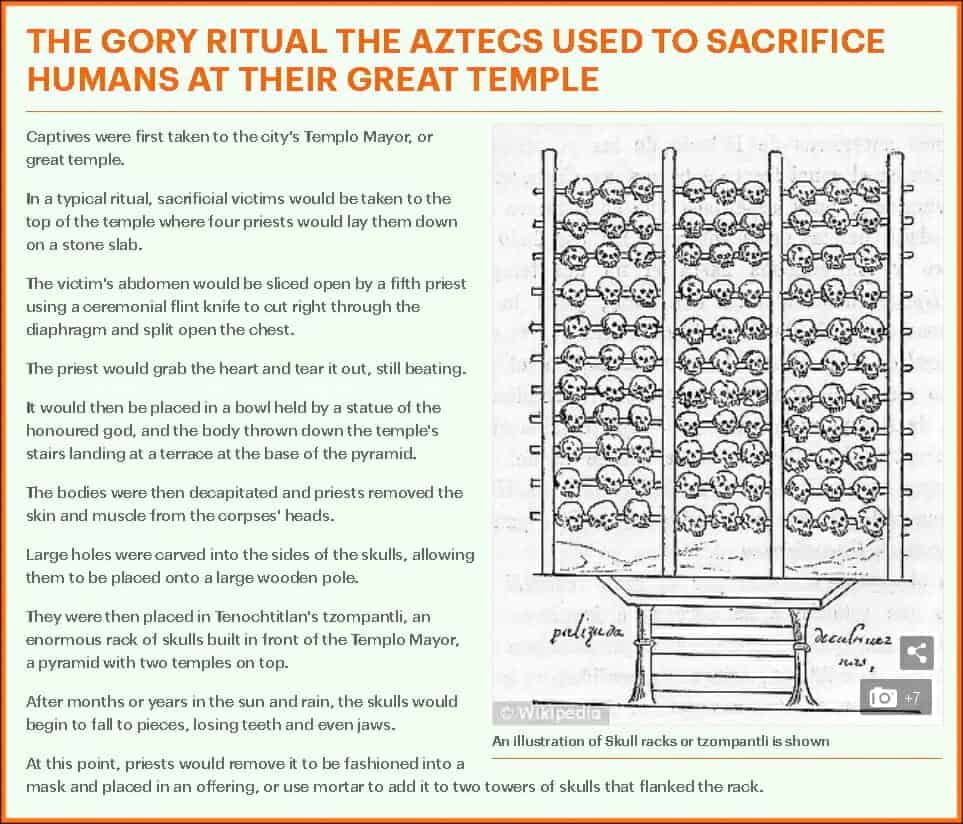US History

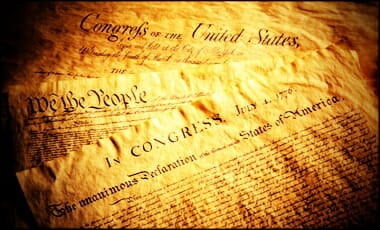
Federalist #10 | Mark Levin
Mark Levin reads from and comments on FEDERALIST #10:
- “Federalist No. 10 is an essay written by James Madison as the tenth of The Federalist Papers: a series of essays initiated by Alexander Hamilton arguing for the ratification of the United States Constitution. Published on November 22, 1787 under the name ‘Publius’, Federalist No. 10 is among the most highly regarded of all American political writings” (WIKI).

Michael Medved Interviews Dinesh D’Souza About His New Film
In this wonderful interview, Dinesh discusses his detractors LACK of knowledge about the content of his film and his positions taken in it. Discussion about the “Southern Strategy,” as well as other historical myths is always an added plus to those that enjoy our political and racial history and the mantras surrounding our past. I include some expanded thoughts by Michael in the opening of the following hour in regard to a caller, I also include a snippet of Larry Elder expanding a bit on Michael’s discussion of interracial marriage from PRAGER U. See my PAGE dealing with much of this HERE (it is big and may take a moment to load).

FBI and CIA Leaders Seem To Want Larger Government
Let me just say that the Founders would probably have preferred State agencies over an over-arching Federal one like the FBI. Comey seems to like the people now that will allow carte-blanche to what the regular agents call the “Seventh Floor.”
PAJAMAS MEDIA comments on Comey’s Tweet (emphasis added):
Former FBI Director James Comey — a lifelong Republican — urged Americans to vote for Democrats this November, echoing other #NeverTrump Republicans in abandoning conservatism just to flout the president. Ironically, his reasoning fits better for supporting Republicans than Democrats.
“The Republican Congress has proven incapable of fulfilling the Founders’ design that ‘Ambition must … counteract ambition,'” Comey tweeted. “All who believe in this country’s values must vote for Democrats this fall.”
Comey tweeted this at a time when not only progressivism (the ideology that encourages a bureaucratic state unaccountable to the people) but outright socialism (a supercharged big government version of that ideology) holds sway in the Democratic Party.
If Comey were truly interested in “ambition counteracting ambition,” he would encourage years of more effective Republican rule, because only Republicans have shown the spine to begin dismantling the unaccountable bureaucracies that represent the greatest threat to the founders’ vision.
On Monday, the 5th Circuit Court of Appeals sent a CHILLING BLOW to the unaccountable bureaucracy. That court struck down one alphabet soup agency — the FHFA — as unconstitutional because it violated the separation of powers. The FHFA is an administrative agency, but it was not accountable to the head of the administration, the president of the United States. The 5th Circuit defended the Constitution and restored sanity to the operation of government.
Similarly, President Donald Trump has been slashing regulations and ordering his administration to PARE BACK the excesses of the administrative state. Furthermore, on the very day Comey told Republicans to vote Democrat, Republicans in the House of Representatives passed the JOBS and Investor Confidence Act of 2018, a law that would VASTLY BENEFIT ENTREPRENEURS.
When James Madison wrote that “ambition must be made to counteract ambition” in Federalist 51, he was not addressing the different parties in Congress — the founders firmly opposed modern parties, what they would call “factions.” Instead, he was addressing the separation of powers between the Congress, the presidency, and the Supreme Court.
“Faction” has dominated American politics for nearly 200 years — with only a few respites. The separation of powers, however, has fallen on hard times. The current bureaucratic administrative state consists of dozens of alphabet soup agencies that effectively make laws, with very little oversight from Congress and rather tepid oversight from the president.
If the costs of federal regulation flowed down to U.S. households, they would cost the average American family $14,809 IN A HIDDEN REGULATORY TAX — that’s $14,809 on top of Social Security, income tax, and estate tax.
Furthermore, the administrative state fosters the perverse situation of a “deep state.” There are so many bureaucratic agencies that it takes a long time for a new president to replace the directors the previous president put in place. For this reason, there can be a large cabal of bureaucrats appointed by the last president (in this case Obama) who are hostile to the policies of the current president (in this case Trump).
[….]
If James Comey really wanted to return to the founders’ vision of ambition counteracting ambition, he would support Tea Party and conservative Republicans. These leaders would actually restore the Constitutional checks and balances, reining in the administrative state.
Instead, Comey turned traitor not just to the Republican Party but to the Constitution itself, supporting Democrats who are embracing socialism and even less separation of powers. Make no mistake: Comey’s “higher loyalty” is not to the Constitution.
/// READ IT ALL ///

Politically Incorrect Guide to Immigration (Prager | Zmirak)
Here is the full interview… followed by links to the topical breakdown of it:
Dennis Prager interviews John Zmirak, who is the author of “The Politically Incorrect Guide to Immigration.” This was quite an interview. I will be splitting some of this up into topical segments in a bit. But Mr. Zmirak is a guy I would love to sit and have a beer with (a few of em’).
Here are the edited portions:
- BIG Unions/Business Support Illegal Immigration
- Children Released To Sex-Traffickers and Slave-Labor
- Jesse Jackson and Black Genocide (Political Opportunism)
- The Catholic Church and Illegal Immigration
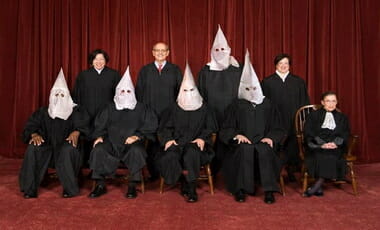
Should The Conservative Justices Be Wearing Hoods?
Campus Reform has an oft played video where students are asked about a non-existent Supreme Court pick (VIDEO). Michael Medved played the whole thing, but this was the part where Michael’s historical mind comes into play. Great nugget for a response to clueless SJWs! See more at Church Militant: “The Anti-Catholic History of the KKK“

Make America (#MA)
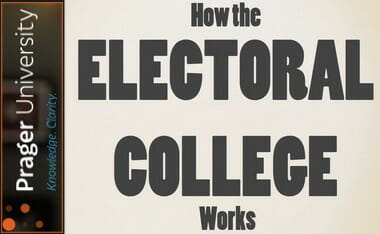
Three Courses On The Electoral College (Civics 101)
Do you understand what the Electoral College is? Or how it works? Or why America uses it to elect its presidents instead of just using a straight popular vote? Author, lawyer and Electoral College expert Tara Ross does, and she explains that to understand the Electoral College is to understand American democracy.
- James Madison (fourth President, co-author of the Federalist Papers and the “father” of the Constitution) – “Democracies have ever been spectacles of turbulence and contention; have ever been found incompatible with personal security, or the rights of property; and have, in general; been as short in their lives as they have been violent in their deaths.”
- John Adams (American political philosopher, first vice President and second President) – “Remember, democracy never lasts long. It soon wastes, exhausts, and murders itself. There never was a democracy yet that did not commit suicide.”
- Benjamin Rush (signer of the Declaration) – “A simple democracy… is one of the greatest of evils.”
- Fisher Ames (American political thinker and leader of the federalists [he entered Harvard at twelve and graduated by sixteen], author of the House language for the First Amendment) – “A democracy is a volcano which conceals the fiery materials of its own destruction. These will provide an eruption and carry desolation in their way.´ / “The known propensity of a democracy is to licentiousness [excessive license] which the ambitious call, and the ignorant believe to be liberty.”
- Governor Morris (signer and penman of the Constitution) – “We have seen the tumult of democracy terminate… as [it has] everywhere terminated, in despotism…. Democracy! Savage and wild. Thou who wouldst bring down the virtous and wise to thy level of folly and guilt.”
- John Quincy Adams (sixth President, son of John Adams [see above]) – “The experience of all former ages had shown that of all human governments, democracy was the most unstable, fluctuating and short-lived.”
- Noah Webster (American educator and journalist as well as publishing the first dictionary) – “In democracy… there are commonly tumults and disorders….. therefore a pure democracy is generally a very bad government. It is often the most tyrannical government on earth.”
- John Witherspoon (signer of the Declaration of Independence) – “Pure democracy cannot subsist long nor be carried far into the departments of state – it is very subject to caprice and the madness of popular rage.”
- Zephaniah Swift (author of America’s first legal text) – “It may generally be remarked that the more a government [or state] resembles a pure democracy the more they abound with disorder and confusion.”
Take note that as well ArticleIV, Section4 of the Constitution reads:
“The United States shall guarantee to every state in this union a republican form of government…“
Right now, there’s a well-organized, below-the-radar effort to render the Electoral College effectively useless. It’s called the National Popular Vote, and it would turn our presidential elections into a majority-rule affair. Would this be good or bad? Author, lawyer, and Electoral College expert Tara Ross explains.
You vote, but then what? Discover how your individual vote contributes to the popular vote and your state’s electoral vote in different ways–and see how votes are counted on both state and national levels.
Critics have long derided the Electoral College as a fusty relic of a bygone era, an unnecessary institution that one day might undermine democracy by electing a minority president. That day has arrived, assuming Gov. Bush wins the Florida recount as seems likely.
The fact that Bush is poised to become president without a plurality of the vote contravenes neither the letter nor the spirit of the Constitution. The wording of our basic law is clear: The winner in the Electoral College takes office as president. But what of the spirit of our institutions? Are we not a democracy that honors the will of the people? The very question indicates a misunderstanding of our Constitution.
James Madison’s famous Federalist No. 10 makes clear that the Founders fashioned a republic, not a pure democracy. To be sure, they knew that the consent of the governed was the ultimate basis of government, but the Founders denied that such consent could be reduced to simple majority or plurality rule. In fact, nothing could be more alien to the spirit of American constitutionalism than equating democracy will the direct, unrefined will of the people.
Recall the ways our constitution puts limits on any unchecked power, including the arbitrary will of the people. Power at the national level is divided among the three branches, each reflecting a different constituency. Power is divided yet again between the national government and the states. Madison noted that these two-fold divisions — the separation of powers and federalism — provided a “double security” for the rights of the people.
What about the democratic principle of one person, one vote? Isn’t that principle essential to our form of government? The Founders’ handiwork says otherwise. Neither the Senate, nor the Supreme Court, nor the president is elected on the basis of one person, one vote. That’s why a state like Montana, with 883,000 residents, gets the same number of Senators as California, with 33 million people. Consistency would require that if we abolish the Electoral College, we rid ourselves of the Senate as well. Are we ready to do that?
The filtering of the popular will through the Electoral College is an affirmation, rather than a betrayal, of the American republic. Doing away with the Electoral College would breach our fidelity to the spirit of the Constitution, a document expressly written to thwart the excesses of majoritarianism. Nonetheless, such fidelity will strike some as blind adherence to the past. For those skeptics, I would point out two other advantages the Electoral College offers.
First, we must keep in mind the likely effects of direct popular election of the president. We would probably see elections dominated by the most populous regions of the country or by several large metropolitan areas. In the 2000 election, for example, Vice President Gore could have put together a plurality or majority in the Northeast, parts of the Midwest, and California.
The victims in such elections would be those regions too sparsely populated to merit the attention of presidential candidates. Pure democrats would hardly regret that diminished status, but I wonder if a large and diverse nation should write off whole parts of its territory. We should keep in mind the regional conflicts that have plagued large and diverse nations like India, China, and Russia. The Electoral College is a good antidote to the poison of regionalism because it forces presidential candidates to seek support throughout the nation. By making sure no state will be left behind, it provides a measure of coherence to our nation.
Second, the Electoral College makes sure that the states count in presidential elections. As such, it is an important part of our federalist system — a system worth preserving. Historically, federalism is central to our grand constitutional effort to restrain power, but even in our own time we have found that devolving power to the states leads to important policy innovations (welfare reform).
If the Founders had wished to create a pure democracy, they would have done so. Those who now wish to do away with the Electoral College are welcome to amend the Constitution, but if they succeed, they will be taking America further away from its roots as a constitutional republic.
How did the terms “Elector” and “Electoral College” come into usage?
The term “electoral college” does not appear in the Constitution. Article II of the Constitution and the 12th Amendment refer to “electors,” but not to the “electoral college.” In the Federalist Papers (No. 68), Alexander Hamilton refers to the process of selecting the Executive, and refers to “the people of each State (who) shall choose a number of persons as electors,” but he does not use the term “electoral college.”
The founders appropriated the concept of electors from the Holy Roman Empire (962 – 1806). An elector was one of a number of princes of the various German states within the Holy Roman Empire who had a right to participate in the election of the German king (who generally was crowned as emperor). The term “college” (from the Latin collegium), refers to a body of persons that act as a unit, as in the college of cardinals who advise the Pope and vote in papal elections. In the early 1800’s, the term “electoral college” came into general usage as the unofficial designation for the group of citizens selected to cast votes for President and Vice President. It was first written into Federal law in 1845, and today the term appears in 3 U.S.C. section 4, in the section heading and in the text as “college of electors.”
Hillary wants a pure Democracy.

IRONY | Maxine Waters Is Violating the KKK Act of 1871
Professor John Eastman notes that Maxine Waters may in fact be violating the Ku Klux Klan Act of 1871. Here is a posrtion of the HISTORY CHANNEL article on this:
…After 1870, Republican state governments in the South turned to Congress for help, resulting in the passage of three Enforcement Acts, the strongest of which was the Ku Klux Klan Act of 1871.
For the first time, the Ku Klux Klan Act designated certain crimes committed by individuals as federal offenses, including conspiracies to deprive citizens of the right to hold office, serve on juries and enjoy the equal protection of the law. The act authorized the president to suspend the writ of habeas corpus and arrest accused individuals without charge, and to send federal forces to suppress Klan violence. This expansion of federal authority–which Ulysses S. Grant promptly used in 1871 to crush Klan activity in South Carolina and other areas of the South–outraged Democrats and even alarmed many Republicans. From the early 1870s onward, white supremacy gradually reasserted its hold on the South as support for Reconstruction waned; by the end of 1876, the entire South was under Democratic control once again….
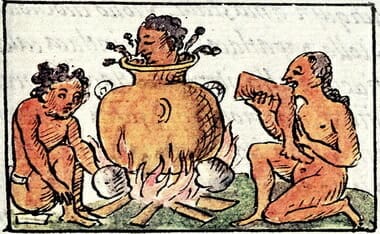
Mayan, Incan and Aztec “Terrorism”
UPDATE!
The DAILY MAIL informs us of the utter devastation of human sacrifice the Aztecs “enjoyed” — and why the cartels are the way they are. They are really a death cult version (Santa Muerte [watch your volume, video starts playing automatically at link]) of this early history:
…In 2015 archaeologists from Mexico’s National Institute of Anthropology and History (INAH) found a gruesome ‘trophy rack’ near the site of the Templo Mayor, one of the main temples in the Aztec capital Tenochtitlan, which later became Mexico City.
Now, they say the find was just the tip of the iceberg, and that the ‘skull tower’ was just a small part of a massive display of skulls known as Huey Tzompantli that was the size of a basketball court.
The new research is slowly uncovering the vast scale of the human sacrifices, performed to honor the gods.
According to the new research detailed in Science, captives were first taken to the city’s Templo Mayor, or great temple, where priests removed their still-beating hearts.
The bodies were then decapitated and priests removed the skin and muscle from the corpses’ heads.
Large holes were carved into the sides of the skulls, allowing them to be placed onto a large wooden pole.
They were then placed in Tenochtitlan’s tzompantli, an enormous rack of skulls built in front of the Templo Mayor, a pyramid with two temples on top.
[….]
Some Spanish conquistadors wrote about the tzompantli and its towers, estimating that the rack alone contained 130,000 skulls.
The skull edifices were mentioned by Andres de Tapia, a Spanish soldier who accompanied Cortes in the 1521 conquest of Mexico..
In his account of the campaign, de Tapia said he counted tens of thousands of skulls at what became known as the Huey Tzompantli….
(CLICK TO ENLARGE)
(The Below Was Posted Oct, 2017)
This is a combining of three previous posts to make it easier for those looking for refutation to the Left’s understanding of Columbus Day. Another resource is this excellent video.
A multicultural approach to the conquest of Mexico usually does not investigate the tragedy of the collision between 16th-century imperial Spain and the Aztec Empire. More often it renders the conquest as melodrama between a mostly noble indigenous people slaughtered by a mostly toxic European Christian culture, acting true to its imperialistic and colonialist traditions and values.
In other words, there is little attention given to Aztec imperialism, colonialism, slavery, human sacrifice, and cannibalism, but rather a great deal of emphasis on Aztec sophisticated time-reckoning, monumental building skills, and social stratification. To explain the miraculous defeat of the huge Mexican empire by a few rag-tag, greedy conquistadors, discussion would not entail the innate savagery of the Aztecs that drove neighboring indigenous tribes to ally themselves with Cortés.
The following conglomeration of responses to two seperate persons in a LONGER VIDEO where some Native-Americans express their “dislike” of Christopher Columbus.
Subjects dealt with are:
- Christopher Columbus being the “first terrorist” on the America’s;
- That land possession was something brought by Westerners;
- or that Columbus “came to America” at all!
- Michael Harner, in his 1977 article The Enigma of Aztec Sacrifice, estimates the number of persons sacrificed in central Mexico in the 15th century as high as 250,000 per year. Fernando de Alva Cortés Ixtlilxochitl, a Mexica descendant and the author of Codex Ixtlilxochitl, estimated that one in five children of the Mexica subjects was killed annually. Victor Davis Hanson argues that a claim by Don Carlos Zumárraga of 20,000 per annum is “more plausible.”…. (Hanson, who accepts the 80,000+ estimate, also notes that it exceeded “the daily murder record at either Auschwitz or Dachau.”) (WIKI)
So the above video show that Christopher Columbus, the Spaniards, nor even Hitler reached the amount of terrorism on people quite like the pre-Colombian indigenous people of the Americas. Here is a small portion from a paper I wrote detailing some of this, followed by an excerpt from a site detailing some of this:
Literature from the Mesoamerica is so very rich and full of the traditions of the people there that it is a welcome challenge to add this flavoring into the classroom. From a historical view Latin literature can be very effective in showing how a culture is influenced over time by another. The Spanish influence on Mesoamerica is still to this day incredibly prevalent; much like the English fingerprint is on North America. The terms should almost be B.S., before Spain, and A.S., after Spain. Norton makes the point in fact that “[m]any of the folktales from Mexico, South and Central America, and southwestern part of the United States reflect a blending of cultures” (Norton et al, 2001, p. 146).
Who could not write of the clash of civilizations represented in the men of Cortez and Montezuma? Unfortunately much of this historical fiction is more fictionalized than history. An exemplary text used to illustrate this in the classroom would be Montezuma’s Daughter by Rider Haggard (1980), originally written in 1894. The myth had already started that the Spaniards were merely there for gold, and killed for it exclusively. While there is a place for literature to express cultural mores and values, even going so far as comforting people away from their homeland, it should still apply to history somewhat. Norton mentions that the “choices of materials to be read and discussed may reflect… moral messages” (Norton, p. 3). Some in the teaching profession can use Latino literature to paint history with broad strokes, thus passing moral messages on to the classroom, guiding, influencing them.
Rarely does one hear in the social studies class, literature class, or history class that Cortez’s small band of men (even with horses) couldn’t have defeated Montezuma’s large army, unless that is, there were defectors. Why would people want to defect from the Aztec culture and join with foreigners? Montezuma had this peculiar habit of taking areas over, grabbing the young men from said area, bringing them back to a temple and while still alive cut their hearts out and throw their bodies down the altar steps (rotten.com, used 4-14-06). This caused many to join the forces of Cortez, making him a more formidable force resulting in forcefully bringing to a halt Aztec pagan sacrifice and setting up Christian icons instead. Incan and Mayan cultures sacrificed humans as well, sometimes 200 children at once.
A lot of this history is bypassed with much of the Mesoamerica literature in the search for national pride and identity. Pride and prejudice is a great conversation to have unfolded by Latino literature, or any of the multicultural writings. Tribal conflicts, territorial rights, or wanting to become a “doctor instead of a bullfighter” are all topics that Western children can relate to, learn essential values from, or see history from a different perspective….
(For references, see my papar, “LATINO LITERATURE“)
The first time I ran into information noting the incredibly evil culture, and how it was ultimately defeated (showing, absolute greed can still have VERY positive aspects to it), was a post on ROTTEN.COM
The funny thing about Montezuma isn’t really that he was a deranged,despotic, cannabilistic, pedophiliac practitioner of human sacrifice with legendary diarrhea.
Well, OK, that is pretty funny. But the really funny thing is how many towns, high schools and rotary clubs are named after the guy. There’s Montezuma, Iowa; Montezuma, Georgia; Montezuma, Kansas; Montezuma, New York; Montezuma Castle National Park in Arizona; Montezuma, Costa Rica; Montezuma, New Mexico… The list goes on and on and on.
What were these people thinking? Do they want you to think their town is full of cannibals? Are they proud of their explosive diarrhea? What was the runner-up name for the town? Hitler, New Mexico? Torquemada? Georgia? De Sade? Kansas?
Montezuma was the emperor of the Aztecs in the 16th century — right about the time that the good times were coming to an end. (Montezuma is the Anglicized version of the Spanish Moctezuma, which is a Spaniardized version of one of those seemingly unpronounceable Aztec names.)
While the coming of the White Man provides a convenient scapegoat for Aztec apologists, the fact is that Montezuma was not a barrel of laughs even before Cortez dropped the Conquistadors in his lap.
Montezuma was a conquering king, who frequently waged war against his neighbors in a pretty successful effort to expand his empire. He kept the gods on his side with a regular regimen of human sacrifice. While the Aztecs had a long history of ritualistic human sacrifice, the art had never known a patron like Montezuma.
At the time, such sacrifices were performed with ritual daggers atop the Aztec pyramids. According to some accounts, Montezuma sacrificed tens of thousands of prisoners at a time, which is a good trick considering each one had to be individually killed.
A 1590 account detailed the procedure: “The usual method of sacrifice was to open the victim’s chest, pull out his heart while he was still alive, and then knock the man down, rolling him down the temple steps, which were awash with blood.” It wasn’t the most efficient procedure. Who knows what Montezuma could have accomplished with a gas chamber, a guillotine, or a submachine gun?
Apparently the gods were appreciative of all this bloodshed, because Montezuma apparently had a pretty good run, annexing several nearby kingdoms and allegedly running a virtual police state with an iron fist….
…let’s move to Columbus and the charge of genocide. The historical Columbus was a Christian explorer. Howard Zinn makes it sound like Columbus came looking for nothing but gold, but Columbus was equally driven by a spirit of exploration and adventure. When we read Columbus’s diaries we see that his motives were complex: he wanted to get rich by discovering new trade routes, but he also wanted to find the Garden of Eden, which he believed was an actual undiscovered place. Of course Columbus didn’t come looking for America; he didn’t know that the American continent existed. Since the Muslims controlled the trade routes of the Arabian Sea, he was looking for a new way to the Far East. Specifically he was looking for India, and that’s why he called the native peoples “Indians.” It is easy to laugh at Columbus’s naïveté, except that he wasn’t entirely wrong. Anthropological research has established that the native people of the Americas did originally come from Asia. Most likely they came across the Bering Strait before the continents drifted apart.
We know that, as a consequence of contact with Columbus and the Europeans who came after him, the native population in the Americas plummeted. By some estimates, more than 80 percent of the Indians perished. This is the basis for the charge of genocide. But there was no genocide. Millions of Indians died as a result of diseases they contracted from their exposure to the white man: smallpox, measles, cholera, and typhus. There is one isolated allegation of Sir Jeffrey Amherst (whose name graces Amherst College) approving a strategy to vanquish a hostile Indian tribe by giving the Indians smallpox-infected blankets. Even here, however, it’s not clear the scheme was actually carried out. As historian William McNeill documents in Plagues and Peoples, the white man generally transmitted his diseases to the Indians without knowing it, and the Indians died in large numbers because they had not developed immunities to those diseases. This is tragedy on a grand scale, but it is not genocide, because genocide implies an intention to wipe out a people. McNeill points out that Europeans themselves had contracted lethal diseases, including the pneumonic and the bubonic plagues, from Mongol invaders from the Asian steppes. The Europeans didn’t have immunities, and during the “Black Death” of the fourteenth century one-third of the population of Europe was wiped out. But no one calls these plagues genocide, because they weren’t.
It’s true that Columbus developed strong prejudices about the native peoples he first encountered—he was prejudiced in favor of them. He praised the intelligence, generosity, and lack of guile among the Tainos, contrasting these qualities with Spanish vices. Subsequent explorers such as Pedro Alvares Cabral, Amerigo Vespucci (from whom we get the name “America”), and Walter Raleigh registered similar positive impressions. So where did Europeans get the idea that Indians were “savages”? Actually, they got it from their experience with the Indians. While the Indians Columbus met on his first voyage were hospitable and friendly, on subsequent voyages Columbus was horrified to discover that a number of sailors he had left behind had been killed and possibly eaten by the cannibalistic Arawaks.
When Bernal Diaz arrived in Mexico with the swashbuckling army of Hernán Cortes, he and his fellow Spaniards saw things they had never seen before. Indeed they witnessed one of the most gruesome spectacles ever seen, something akin to what American soldiers saw after World War II when they entered the Nazi concentration camps. As Diaz describes the Aztecs, in an account generally corroborated by modern scholars, “They strike open the wretched Indian’s chest with flint knives and hastily tear out the palpitating heart which, with the blood, they present to the idols in whose name they have performed the sacrifice. Then they cut off the arms, thighs and head, eating the arms and thighs at their ceremonial banquets.” Huge numbers of Indians—typically captives in war—were sacrificed, sometimes hundreds in a single day. Yet in a comic attempt to diminish the cruelty of the Aztecs, Howard Zinn remarks that their mass murder “did not erase a certain innocence” and he accuses Cortes of nefarious conduct “turning Aztec against Aztec.”
If the Aztecs of Mexico seemed especially bloodthirsty, they were rivaled by the Incas of South America who also erected sacrificial mounds on which they performed elaborate rites of human sacrifice, so that their altars were drenched with blood, bones were strewn everywhere, and priests collapsed from exhaustion from stabbing their victims.
Even while Europeans were startled and appalled at such bloodthirstiness, there was a countercurrent of admiration for what Europeans saw as the Indians’ better qualities. Starting with Columbus and continuing through the next few centuries, native Indians were regarded as “noble savages.” They were admired for their dignity stoicism, and bravery. In reality, the native Indians probably had these qualities in the same proportion as human beings elsewhere on the planet. The idealization of them as “noble savages” seems to be a projection of European fantasies about primitive innocence onto the natives. We too—and especially modern progressives-have the same fantasies. Unlike us, however, the Spanish were forced to confront the reality of Aztec and Inca behavior. Today we have an appreciation for the achievements of Aztec and Inca culture, such as its social organization and temple architecture; but we cannot fault the Spanish for being “distracted” by the mass murder they witnessed. Not all the European hostility to the Indians was the result of irrational prejudice.
While the Spanish conquistadores were surprised to see humans sacrificed in droves, they were not shocked to witness slavery, the subjugation of women, or brutal treatment of war captives—these were familiar enough practices from their own culture. Moreover, in conquering the Indians, and establishing alien rule over them, the Spanish were doing to the Indians nothing more than the Indians had done to each other. So from the point of view of the native Indian people, one empire, that of Spain, replaced another, that of the Aztecs. Did life for the native Indian get worse? It’s very hard to say. The ordinary Indian might now have a higher risk of disease, but he certainly had a lower risk of finding himself under the lurid glare of the obsidian knife.
What, then, distinguished the Spanish from the Indians? The Peruvian writer and Nobel laureate Mario Vargas Llosa offers an arresting answer. The conquistadores who came to the Americas, he concedes, were “semi-literate, implacable and greedy.” They were clearly believers in the conquest ethic—land is yours if you can take it. Yet these semi-literate greedy swordsmen, without knowing it, also brought with them something new to the Americas. They brought with them the ideas of Western civilization, from Athenian rationalism to Judeo-Christian ideas of human brotherhood to more modern conceptions of self-government, human rights, and property rights. Some of these ideas were nascent and newly developing even in the West. Nevertheless, they were there, and without intending to do so, the conquistadors brought them to the Americas.
To appreciate what Vargas Llosa is saying, consider an astonishing series of events that took place in Spain in the early sixteenth century. At the urging of a group of Spanish clergy, the king of Spain called a halt to Spanish expansion in the Americas, pending the resolution of the question of whether American Indians had souls and could be justly enslaved. This seems odd, and even appalling, to us today, but we should not miss its significance. Historian Lewis Hanke writes that never before or since has a powerful emperor “ordered his conquests to cease until it was decided if they were just.” The king’s actions were in response to petitions by a group of Spanish priests, led by Bartolomé de las Casas. Las Casas defended the Indians in a famous debate held at Valladolid in Spain. On the other side was an Aristotelian scholar, Juan Sepulveda, who relied on Aristotle’s concept of the “natural slave” to argue that Indians were inferior and therefore could be subjugated. Las Casas countered that Indians were human beings with the same dignity and spiritual nature as the Spanish. Today Las Casas is portrayed as a heroic eccentric, but his basic position prevailed at Valladolid. It was endorsed by the pope, who declared in his bull Sublimns Deus, “Indians… are by no means to be deprived of their liberty or the possessions of their property… nor should they be in any way enslaved; should the contrary happen it shall be null and of no effect.” Papal bulls and even royal edicts were largely ignored thousands of miles away—there were no effective mechanisms of enforcement. The conquest ethic prevailed. Even so, over time the principles of Valladolid and Sublimus Deus provided the moral foundation for the enfranchisement of Indians. Indians could themselves appeal to Western ideas of equality, dignity, and property rights in order to resist subjugation, enforce treaties, and get some of their land back….
[….]
The white men who settled America didn’t come as foreign invaders; they came as settlers. Unlike the Spanish, who ruled Mexico from afar, the English families who arrived in America left everything behind and staked their lives on the new world. In other words, they came as immigrants. We can say, of course, that immigration doesn’t confer any privileges, and just because you come here to settle doesn’t mean you have a right to the land that is here, but then that logic would also apply to the Indians.
DINESH D’SOUZA, America: Imagine a World Without Her (Washington, DC: Regnery, 2014), 93-97, 98.
On June 23, 1865, in what was the last land battle of the war, Confederate Brigadier General and Cherokee Chief, Stand Watie, finally surrendered his predominantly Cherokee, Oklahoma Indian force to the Union. He was the last Confederate General “standing.”
- …That same month, Watie’s command surprised a group of soldiers that included troops from the 79th U.S. Colored Infantry who were cutting hay for livestock at the fort. Instead of accepting the surrender of the African Americans, the Confederates killed 40 of them. Such exploits earned Watie promotion to brigadier general… (HISTORY BUFF)
One should see my stuff on the topics as well:
- Native American History In Public School (Howard Zinn Refuted)
- Johnny Depp & Disney vs. History (h/t ~ Brad Thor);
- A Rebuttal Of The Lefts View of Columbus and the New World;
- Trail of Tears, Death Toll Myths Dispelled (This is a link elsewhere, to which the following is the main premise):
- (Editor’s note: A recent federal bill memorializing as a National Historic Trail what has come to be known as the Cherokee Indian Trail of Tears is based on false history, argues William R. Higginbotham. In this article, the Texas-based writer delves into the historic record and concludes that about 840 Indians not the 4,000 figure commonly accepted died in the 1837-38 trek west; that the government-financed march was conducted by the Indians themselves; and that the phrase “Trail of Tears” was a label that was added 70 years later under questionable circumstances.) The problem with some of our accounts of history is that they have been manipulated to fit conclusions not borne out by facts. Nothing could be more intellectually dishonest. This is about a vivid case in point.
THE FEDERALIST has this excellent article that should be read in full:
…..“Long before the white European knew a North American continent existed, Indians of the Northern Plains were massacring entire villages,” says George Franklin Feldman in the book “Cannibalism, Headhunting and Human Sacrifice in North America: A History Forgotten.” “And not just killed, but mutilated. Hands and feet were cut off, each body’s head was scalped, the remains were left scattered around the village, which was burned.”
Less Pocahontas and More Blood Sacrifice
When thinking of pre-Columbian America, forget what you’ve seen in the Disney movies. Think “slavery, cannibalism and mass human sacrifice.” From the Aztecs to the Iroquois, that was life among the indigenous peoples before Columbus arrived.
For all the talk from the angry and indigenous about European slavery, it turns out that pre-Columbian America was virtually one huge slave camp. According to “Slavery and Native Americans in British North America and the United States: 1600 to 1865,” by Tony Seybert, “Most Native American tribal groups practiced some form of slavery before the European introduction of African slavery into North America.”
“Enslaved warriors sometimes endured mutilation or torture that could end in death as part of a grief ritual for relatives slain in battle. Some Indians cut off one foot of their captives to keep them from running away.”
Things changed when the Europeans arrived, however: “Indians found that British settlers… eagerly purchased or captured Indians to use as forced labor. More and more, Indians began selling war captives to whites.”
That’s right: Pocahontas and her pals were slave traders. If you were an Indian lucky enough to be sold to a European slave master, that turned out to be a good thing, relatively speaking. At least you didn’t end up in a scene from “Indiana Jones And The Temple of Doom.”
Ritual human sacrifice was widespread in the Americas. The Incas, for example, practiced ritual human sacrifice to appease their gods, either executing captive warriors or “their own specially raised, perfectly formed children,” according to Kim MacQuarrie, author of “The Last Days of the Incas.”
The Aztecs, on the other hand, were more into the “volume, volume, VOLUME” approach to ritual human slaughter. At the re-consecration of the Great Pyramid of Tenochtitlan in 1487, the Aztecs performed a mass human sacrifice of an estimated 80,000 enslaved captives in four days.
Also Widespread Torture and Cannibalism
According to an eyewitness account of “indigenous peoples” at work—in this case, the Iroquois in 1642, as observed by the Rev. Father Barthelemy Vimont’s “The Jesuit Relations”—captives had their fingers cut off, were forced to set each other on fire, had their skinned stripped off and, in one captured warrior’s case, “the torture continued throughout the night, building to a fervor, finally ending at sunrise by cutting his scalp open, forcing sand into the wound, and dragging his mutilated body around the camp. When they had finished, the Iroquois carved up and ate parts of his body.”
Shocked? Don’t be. Cannibalism was also fairly common in the New World before (and after) Columbus arrived. According to numerous sources, the name “Mohawk” comes from the Algonquin for “flesh eaters.” Anthropologist Marvin Harris, author of “Cannibals and Kings,” reports that the Aztecs viewed their prisoners as “marching meat.”
The native peoples also had an odd obsession with heads. Scalping was a common practice among many tribes, while some like the Jivaro in the Andes were feared for their head-hunting, shrinking their victims’ heads to the size of an orange. Even sports involved severed heads. If you were lucky enough to survive a game of the wildly popular Meso-American ball (losers were often dispatched to paradise), your trophy could include an actual human head.
There Are No Pure Peoples in History
Slavery, torture, and cannibalism—tell me why we’re celebrating “Indigenous People’s Day” again? And we’re getting rid of Columbus Day to protest—what? The fact that one group of slavery-practicing violent people conquered another group of violent, blood-thirsty slavers? That’s a precis of the history of the Americas before Columbus arrived.
This has always been the fatal flaw of the Left’s politics of race guilt: Name the race that’s not “guilty”? Racism, violence, and conquest are part of the human condition, not the European one….
INCAS AND OTHERS AS WELL
This includes the Incas as well (WIKI) — click pic for related story: 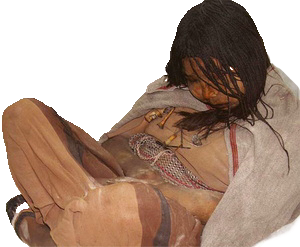
Qhapaq hucha was the Inca practice of human sacrifice, mainly using children. The Incas performed child sacrifices during or after important events, such as the death of the Sapa Inca (emperor) or during a famine. Children were selected as sacrificial victims as they were considered to be the purest of beings. These children were also physically perfect and healthy, because they were the best the people could present to their gods. The victims may be as young as 6 and as old as 15.
Months or even years before the sacrifice pilgrimage, the children were fattened up. Their diets were those of the elite, consisting of maize and animal proteins. They were dressed in fine clothing and jewelry and escorted to Cusco to meet the emperor where a feast was held in their honor. More than 100 precious ornaments were found to be buried with these children in the burial site.
The Incan high priests took the children to high mountaintops for sacrifice. As the journey was extremely long and arduous, especially so for the younger, coca leaves were fed to them to aid them in their breathing so as to allow them to reach the burial site alive. Upon reaching the burial site, the children were given an intoxicating drink to minimize pain, fear, and resistance. They were then killed either by strangulation, a blow to the head, or by leaving them to lose consciousness in the extreme cold and die of exposure.
Early colonial Spanish missionaries wrote about this practice but only recently have archaeologists such as Johan Reinhard begun to find the bodies of these victims on Andean mountaintops, naturally mummified due to the freezing temperatures and dry windy mountain air.

America’s 2nd War of Independence (War of 1812)
In this video, author Brian Kilmeade sheds light on the largely and unfortunately overlooked War of 1812. Kilmeade explains how this war got started, the daunting odds against a nation in its infancy, and the unlikely hero who secured America’s young nation’s future by pulling off one of the greatest upsets in military history.
First Invasion: The War of 1812, a History Channel documentary that first aired in 2004, portrays a young United States of America “on the brink of annihilation” as it battles the largest and most powerful empire on earth. Critics say the documentary is far too pro-American, and that it ignores or downplays crucial elements of the War of 1812. Others praise First Invasion for its compelling presentation of a far too neglected period of history.

Federal Law and 2nd Amendment Age Restrictions
- It may be laid down as a primary position, and the basis of our system, that every Citizen who enjoys the protection of a free Government, owes not only a proportion of his property, but even of his personal services to the defence [sic] of it, and consequently that the Citizens of America (with a few legal and official exceptions) from 18 to 50 Years of Age should be borne on the Militia Rolls, provided with uniform Arms, and so far accustomed to the use of them, that the Total strength of the Country might be called forth at a Short Notice on any very interesting Emergency, for these purposes they ought to be duly organized into Commands of the same formation.
— George Washington, Letter to Alexander Hamilton (Mount Vernon) | Friday, May 02, 1783
Second Militia Act of 1792 (WIKI)
- The second Act, passed May 8, 1792, provided for the organization of the state militias. It conscripted every “free able-bodied white male citizen” between the ages of 18 and 45 into a local militia company. (This was later expanded to all males, regardless of race, between the ages of 18 and 54 in 1862.)
Larry Elder interviews Law Professor (UCLA) Eugene Volokh about the proposed age limits to purchasing long-guns. In fact, in a recent article by Larry, he notes the law regarding the age one is in the militia:
……The second point, often ignored, is the very purpose of the Second Amendment. It is to prevent government tyranny through the power of a citizens’ militia. Since many on the left denounce President Donald Trump as a “tyrant” or a “dictator” or a “Hitler,” they might find that the Second Amendment could come in handy. As to why a 19-year-old can legally get a gun, the Second Amendment refers to a “well-regulated militia” as necessary for our freedom.
And yes, a 19-year-old is part of the militia.
Section 311 of the U.S. Code Title 10 (as last amended in 1958) says: “(a) The militia of the United States consists of all able-bodied males at least 17 years of age and … under 45 years of age who are, or who have made a declaration of intention to become, citizens of the United States and of female citizens of the United States who are members of the National Guard.”……
